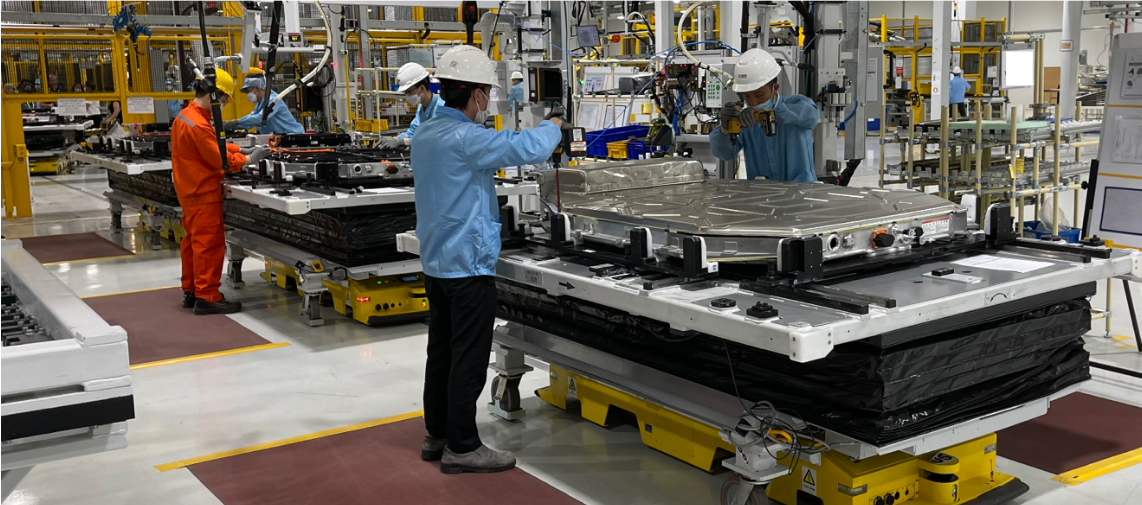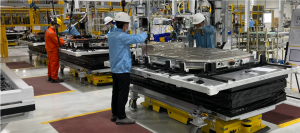EMC publishes briefing note on PBO’s report on VW and Stellantis battery plants
September 20, 2023
Montreal, September 20, 2023 – Last week, the Parliamentary Budget Officer (PBO) published a Break-even Analysis of Production Subsidies for Stellantis-LGES and Volkswagen1. In this Report, […]
Montreal, September 20, 2023 – Last week, the Parliamentary Budget Officer (PBO) published a Break-even Analysis of Production Subsidies for Stellantis-LGES and Volkswagen1. In this Report, the PBO estimates that it will take 20 years for government revenues generated solely from the EV battery manufacturing plants to reach the amount of production “subsidies” announced by the governments of Canada and Ontario. But the PBO break-even analysis excluded investments and production increases in other nodes of the EV supply chain.

Key points from EMC’s briefing note include :
91.4% of the potential return excluded from the report : For EMC, this exclusion is very surprising considering that the main purpose of the government financial support is specifically aimed at developing a whole Canadian EV supply chain. As noted in the PBO’s report “Cell manufacturing, which will occur at the Volkswagen plant, only represents a fraction of incremental revenues (8.6 per cent) across the supply chain.”
The uncertainty argument is moot : According to the PBO, the main reason why they did not consider the whole supply chain was uncertainty. We can read “Given the uncertainty surrounding the future geographic location of investments and production related to other nodes of the EV supply chain, such as EV assembly and battery material production, the PBO’s estimate represents only the government revenues generated by cell and module manufacturing, upon which the production subsidies are based. This contrasts with the federal government’s break-even analysis for Volkswagen, which included investments and assumed production increases in other nodes of the EV supply chain.”
ZEV and GHG regulations get us closer to scenario 3 : When looking at the Trillium report, the PBO report indicates that “the first scenario (“Off-Target EV Adoption”) includes only EV battery- related investments announced in Canada at the time of the report, including the Stellantis-LGES facility, and assumes EV sales across Canada and the U.S. fall short of government announced targets”. It’s important to note that the Trillium report was written in September 2022, before the Canadian government officially announced its ZEV sales targets3 and regulation in December 2022 and before the US government announced their own GHG emission targets and regulation in April 20234. The fact that both governments officially announced that they were going to adopt clear regulations to secure the growth in EV sales excludes scenario 1 from the most plausible investment outcomes and gets Canada closer to scenario 3.
A tax break is different from a subsidy : EMC is also surprised to see that the PBO qualifies the federal government’s support for the Volkswagen production facility as a ‘’subsidy’’ since this is NOT a subsidy but a tax break. To quote Brian Lilley from the Toronto Sun7 “The Trudeau government’s offer to both VW and Stellantis is based on what is described as production tax credits. That’s not a subsidy, that’s a tax break.
Canada’s financial support of the auto industry is tied to the IRA : EMC is also surprised to see that the PBO’s report did not mention the fact that Canada’s financial support for EV manufacturing in Canada is a direct response to the Inflation Reduction Act AND that the Canadian government has clearly stated multiple times that its level of support would be directly tied to the level of US support for EV manufacturing. If US support were to decrease or disappear for any reason between now and 2032, the Canadian financial support would decrease or disappear accordingly.
The future of the Canadian auto industry is at stake : Considering that the world is presently transitioning at a very fast pace towards EV production, everyone in the industry knows that if the federal government had decided to do nothing to help the Canadian auto sector transition to EV manufacturing, the risk of not having an auto sector at all by 2035 would have been overwhelming and its demise devastating. Considering that the Canadian auto sector plays a key role in Canada’s economy, with a $12.5 Billion contribution to GDP in 20209, we fully support the federal government in its will to accelerate the transition to EV manufacturing.
